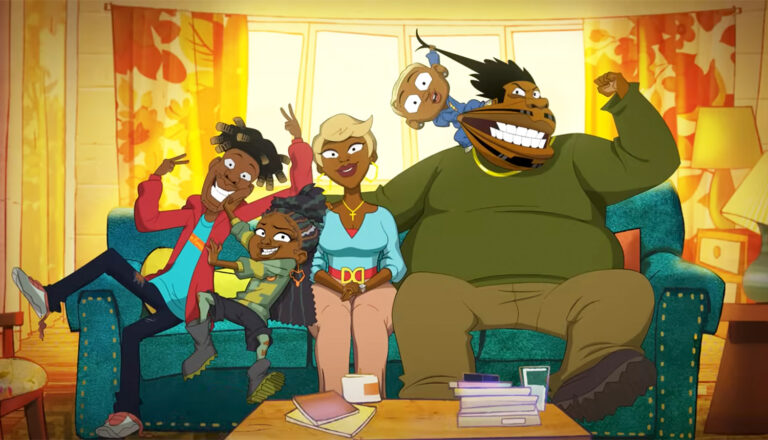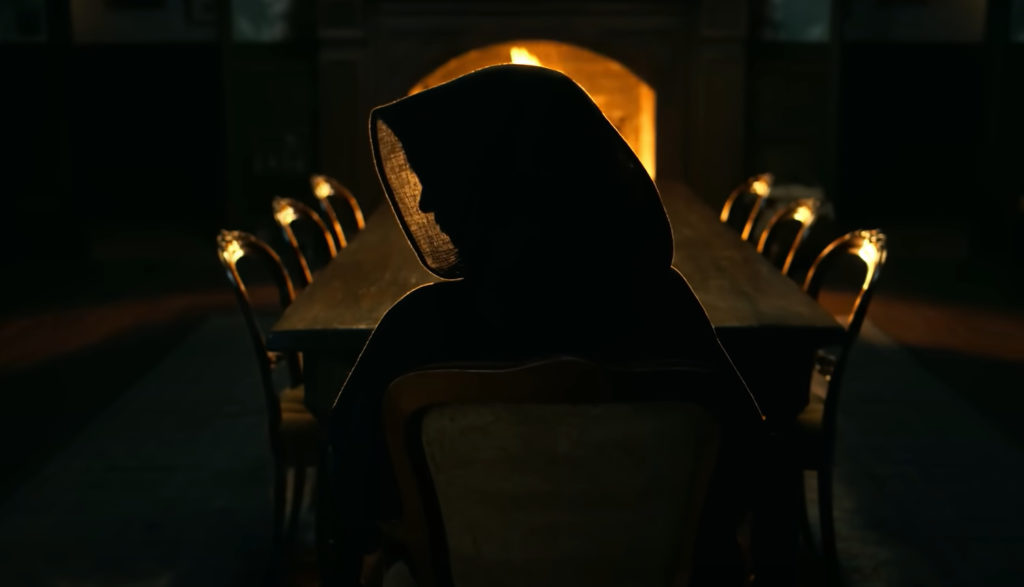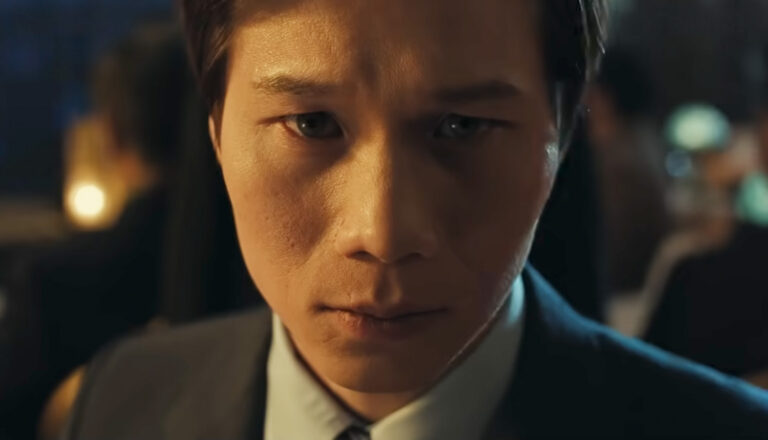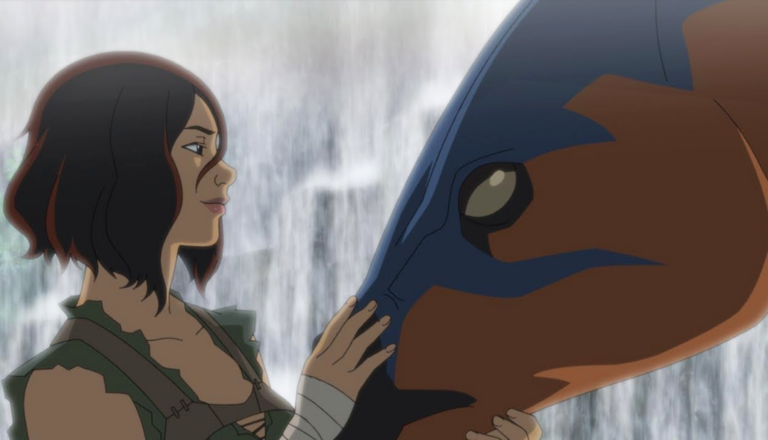
Good Times
Netflix takes a classic sitcom, Good Times, and turns it into a vulgar, violent, sexually-charged TV-MA show.

It’s not easy to scare someone who’s dying. But the residents of Brightcliffe try it all the same.
This hospice is home to the young and dying—has been for, oh nearly 30 years by 1994. Lots of teens have come and gone in those decades. No one walks out of Brightcliffe, really. (Well, almost no one, but we’ll get to that.) For the most part, they’re wheeled out. Their bodies ride the ancient elevator down, down, down to the basement’s morgue.
But what of their souls?
The kids of Brightcliffe have pondered that very question for years now, cycling in and out of something they call the Midnight Club before they, too, ride the elevator down. At the stroke of midnight, they gather in the library before a roaring fire. And there, they tell stories—ghost stories for the most part. Stories that speculate on the nature of life and death, good and evil. Stories that perhaps tickle questions they all might ask in the dark. Will I live on somehow after I die? Will I go on? They make a pact with each other, too: Once they die, they’ll press against the veil between life and death if possible, to let those still alive know if there is a world beyond.
And as the clock runs faster, and the mortal sand in the hourglass trickles down, down, down, many ask those questions more and more. For in the shadows of Brightcliffe, some begin to see … shadows. Hands that reach from its black corners. Faces that stare from mirrors and half-closed doors.
It’s not easy to scare someone who’s dying. But sometimes, these dying teens are scared all the same.
Ilonka’s the most recent arrival at Brightcliffe. She’s smart, this one: She’d planned to go to Stanford—but that was before the thyroid cancer, of course. But she’s not lost her craving for knowledge. And she’s not lost hope, either.
True, most of Brightcliffe’s residents will live a few months and die there. But Ilonka found one who lived there in 1968 and lived on. Julia Jayne didn’t die. Rather, the cancer did. And in a news story Ilonka dug up, Julia credited something in Brightcliffe for it.
Ilonka wants to live, too—and she’ll try anything to do so.
Her roommate, Anya, has seen that optimism before. She’s seen plenty of faces come and go, optimistically drinking their herbal tea and chewing their ginger; praying and casting spells. She used to be optimistic, too. But Anya’s seen too much death to believe she’s on anything but a one-way trip to the elevator going down. And it’s coming soon.
The other residents lie somewhere in between. And shepherding them all to their final rest is Dr. Stanton, who seems all smiles and good wishes, but who just may be hiding something.
Prolific YA horror author Christopher Pike published The Midnight Club back in 1994, and this Netflix show keeps that retro setting. His work mightily influenced many of his readers, including a guy named Mike Flanagan.
Fast-forward a few decades, and Flanagan is one of the hottest names when it comes to hauntings: He breathed new life into Shirley Jackson’s classic The Haunting of Hill House for Netflix. He took Henry James’ The Turn of the Screw and turned it into The Haunting of Bly Manor. Midnight Mass became Flanagan’s third October squirmfest. But he always wanted to revisit Pike’s work.
Enter Netflix’s The Midnight Club that, yes, is based on Pike’s book. But through its storytelling trope, the series also revisits many other Pike stories. And the series indeed offers its share of chills.
But it’s scary for other reasons, too.
When angling for the television rights for Pike’s novels, Flanagan sent him a fan message, promising that Netflix might be interested in a “proper YA show,” according to Flanagan’s interview with Vanity Fair.
But Pike’s work, while written for teens, always indulged a tang of the transgressive. He worked with very heavy themes, and his books include lots of content issues, including sex and drugs and violence.
The show itself may raise the content level a notch or two from the books that inspired it, filling its scripts with profanity and its screens with short bursts of wince-worthy gore. This is a “YA show” with an MA rating—meaning that even Netflix acknowledges it’s made for adults, not teens.
Strange, isn’t it, given how Netflix is clearly aiming for a teen audience.
Yes, Brightcliffe is a scary place for those who live there. But for parents shuffling through the halls of Netflix for something appropriate for their kids to watch, The Midnight Club might be terrifying.
Ilonka learns that she has terminal thyroid cancer and convinces her foster father to let her move into Brightcliffe—a home for “teenagers to transition on their own terms.” She meets her fellow transitioners there, from cute Kevin to sour Anya; from devout Sandra to habitual liar Cheri. But she also meets some more spectral residents: Whether they’re real or hallucinations triggered by her disease and medication, Ilonka herself can’t say.
Ilonka discovers a pentagram drawn under her bed. Anya tells her it was likely left over from the room’s last resident, Rachel. “She was super-into Wiccan stuff at the end,” Anya says.
Later, when the residents gather at midnight to tell ghost stories, Sandra says, “God will forgive [Rachel] for the witchcraft stuff.” Anya draws a strong (if curious) distinction between witchcraft and Wicca. “If she was a heretic, I’m going straight to hell,” she says.
We hear other references to religion, too. Another patient, Spencer, says that yoga is “Hindi for bulls—,” and says Sandra’s devotion to Jesus is likewise suspect. We learn that Brightcliffe, before it became a hospice, was once home to both a “religious compound” (in the 1940s) and a cult. Meanwhile, the supernatural elements in the house are talked about. “People see ghosts, hear voices,” someone says, passing it off on the drugs most patients take toward the end. (The images we see of these spirits—real or imagined—can be startling and frightening.)
One patient tells a story about a girl who, apparently, is constantly screaming. Another unpacks a tale of a girl who knew the date that everyone was going to die. (We see visual depictions of the deaths of three people, including one who’s killed in a bloody car crash.)
Ilonka coughs up blood. She faints a couple of times as well.
We see a couple kiss passionately. Stories specifically about Brightcliffe are allegedly discouraged because they’re said to be “masturbatory.” Drinking wine (swiped from the hospice’s private reserve, apparently) is part of the initiation ritual of the Midnight Club. Before she’s sick, Ilonka goes to a college party where there’s a great deal of drinking. (it’s not clear if she’s had anything to drink or not.) Various medicines are discussed.
Characters say the f-word 15 times, and the s-word nearly as many. We also hear “a–,” “b–ch” and “d–n.” God’s name is misused twice (once with the word “d–n”), and Jesus’ name is abused once.
While bottling spring water that she hopes may have healing effects, Ilonka meets a strange woman on Brightcliffe’s grounds (who is after, it seems, the same water). Anya continues to give Ilonka an awfully hard time, but the other residents that she’s actually an “OK to good person” once you get to know her. Anya tells the story of …
… Dana, who is by all accounts a practically perfect teen and gifted dancer. But to Dana, all that perfection feels like a prison. Soon, she’s visited by the Devil (who looks like Brightcliffe’s Dr. Stanton), who offers her something she can’t refuse: A double of herself. One who can be the perfect girl she was raised to be, the other who can do whatever her heart desires. And each Dana will feel and experience everything the other Dana does.
“You can have your cake and you can eat it, drink it, smoke it, snort it and f— it, too,” the Devil promises. Dana doesn’t need to sign away her soul, either. “That’s propaganda,” she says.
But the Devil doesn’t need a soul promissory note … she knows just how this story is going to go.
In that story, we hear loads of religious references. Before her doppelganger comes along, Dana would “ask God to free her from those [sinful] desires. But at the same time, she’d ask the universe for those same desires to be fulfilled.” The Devil tells her, “One thing you can take to the bank is that God doesn’t answer. God never answers.” One of the Danas winds up going to hell—with the survivor feeling all the torments that the other feels.
The Danas experience other things, too. One Dana loses her virginity while the other is sitting with her parents, watching a movie. (We don’t see anything critical, but do see the movie-watching Dana begin to uncomfortably experience sex.) The other Dana begins using drugs; we see her take them while both Danas experience their effects. When the other Dana refuses to answer Dana Prime, Dana Prime engages in horrific acts of self-mutilation (which might also be quite traumatic for those who’ve wrestled with cutting or self-injury). One Dana ultimately kills the other and loses a leg in the process. (An ankle snaps as well.)
In the real world, Spencer cuts his hand (sending blood spattering about) and runs to the infirmary. We see his gaping wound get stitched up. Meanwhile, Ilonka is told that Spencer has AIDS, and Anya lights into her for making an uncomfortable face at the disease’s mention. She notes that they might be dying, but at least people don’t treat cancer as a “punishment from God.”
We learn that Anya “even said prayers” when she first arrived at Brightcliffe. The man stitching up Spencer tries to get him to watch Interview With a Vampire, in part because all of the attractive actors in it. When Amesh says that his bucket list includes attending his sister’s wedding, hang gliding and losing his virginity—none of which seem likely to happen—a friend tells him that he has confidence that Amesh will lose his virginity while hang gliding to his sister’s wedding.
We hear a Japanese legend (believed by Amesh) that making 1,000 paper cranes will allow you to get a wish granted by the gods. A stranger tells Ilonka that she’s sitting in a “healing vortex.” Anya retches into a toilet. We hear that some people, toward the end, treat themselves with “urine therapy,” where they drink or inject or give themselves enemas with their own fluids.
Characters use the f-word nine times and the s-word seven. We also hear “a–,” “b–ch,” “d–n,” “h—” and “p-ss.” God’s and Jesus’ names are both misused once.


Paul Asay has been part of the Plugged In staff since 2007, watching and reviewing roughly 15 quintillion movies and television shows. He’s written for a number of other publications, too, including Time, The Washington Post and Christianity Today. The author of several books, Paul loves to find spirituality in unexpected places, including popular entertainment, and he loves all things superhero. His vices include James Bond films, Mountain Dew and terrible B-grade movies. He’s married, has two children and a neurotic dog, runs marathons on occasion and hopes to someday own his own tuxedo. Feel free to follow him on Twitter @AsayPaul.

Netflix takes a classic sitcom, Good Times, and turns it into a vulgar, violent, sexually-charged TV-MA show.

While its protagonist might live a nuanced life, The Sympathizer’s problematic content can’t be described the same way.

Say hola once again to the iconic explorer in this faithful reboot of the children’s series.

Based on a popular video game, Ark: The Animated Series features hungry dinosaurs, bloodthirsty people and plenty of problems.